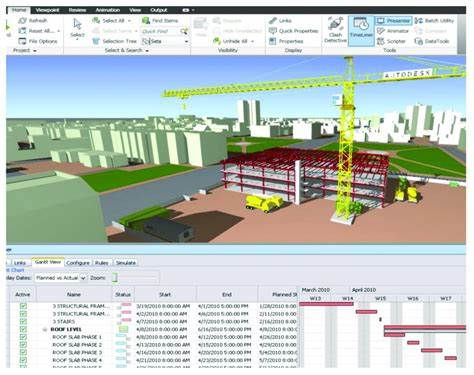5 Clear Signs Your Construction Firm Needs BIM
- Loyiso Toyi BSc Eng (Civl)

- May 3
- 3 min read

In today’s competitive construction landscape, efficiency, precision, and collaboration are more critical than ever. Yet, many construction firms still rely on outdated methods that often result in costly rework, miscommunication, and project delays. If your firm is facing similar challenges, it might be time to consider Building Information Modeling (BIM).
BIM isn't just software—it's a smarter way of managing the entire lifecycle of a building project. Here are five unmistakable signs that your construction firm could significantly benefit from adopting BIM.
You Struggle with Coordinating Complex Projects
Managing large, multidisciplinary projects is no easy task—especially when architects, engineers, and contractors all work in silos. If you're frequently dealing with misaligned drawings, unclear responsibilities, or last-minute design changes, it's a sign that your coordination process needs an upgrade.
How BIM Helps:
BIM acts as a single source of truth for the entire project team. Everyone—from designers to contractors—works within a shared digital environment. Real-time updates, automated clash detection, and model-based collaboration tools allow for better coordination and fewer surprises on-site.
Real-World Impact: Firms using BIM for coordination have reported up to a 60% reduction in design conflicts and RFIs during construction.
Rework and Project Delays Are Eating into Your Profits
Few things are more frustrating—and costly—than redoing work due to errors that could have been caught earlier. If your team is constantly dealing with change orders, scheduling conflicts, or poor sequencing of trades, you're likely losing both time and money.
How BIM Helps:
BIM allows you to detect design clashes before construction even begins. Through 3D and 4D simulations, you can test different construction sequences and identify risks early. This proactive approach significantly reduces costly rework and helps you deliver projects on time and within budget.
Pro Tip: Use 4D BIM to visualize your construction schedule. It’s a game-changer for planning logistics and avoiding on-site clashes.
Your Decisions Are Based on Gut Feeling, Not Data
In a world driven by information, relying on intuition or incomplete data for critical decisions can be a liability. If your team lacks access to real-time, project-specific data, you’re likely missing opportunities to optimize performance.
How BIM Helps:
BIM brings data-rich models to life—every element in the model has associated information, from material specifications to cost and performance data. This allows for better forecasting, risk assessment, and decision-making at every stage of the project lifecycle.
BIM Insight: Integrate your BIM model with tools like Power BI to create live dashboards for cost, schedule, and progress tracking.
Communication Breakdowns Are Slowing You Down
Construction projects depend on clear communication. But when teams rely on emails, PDFs, and paper drawings, critical information often gets lost in translation. If your project team is constantly playing catch-up, or working off outdated plans, your communication process is broken.
How BIM Helps:
With BIM, all project information is stored in a centralized model that's accessible to everyone with proper permissions. Changes are tracked and versioned automatically, ensuring that your team is always working with the most up-to-date information.
Collaboration Tip: Use cloud-based BIM platforms like Autodesk Construction Cloud or Trimble Connect to ensure secure and seamless team collaboration.
You're Under Pressure to Deliver Sustainable, Future-Ready Buildings
Today’s clients and regulatory bodies demand sustainability, energy efficiency, and smart building capabilities. If your firm lacks the tools to meet these demands, you may be losing out on high-value projects.
How BIM Helps:
BIM supports sustainability by enabling early energy analysis, material lifecycle tracking, and environmental impact simulations. It empowers you to make sustainable choices in the design phase and prove compliance with green building standards like LEED or BREEAM.
Sustainable Advantage: BIM can help you model alternative building materials and systems to find the best balance of cost, performance, and environmental impact.
Is It Time for Your Firm to Adopt BIM?
If any (or all) of the signs above resonate with your current project challenges, it's time to consider making the shift. BIM is not just for large firms or mega-projects—today, small to mid-sized construction companies are also adopting BIM to remain competitive and deliver higher value to clients.
At its core, BIM is about smarter workflows, better collaboration, and data-driven decision-making. The sooner you invest in BIM capabilities, the sooner you'll see improvements in project efficiency, client satisfaction, and your bottom line.
Next Steps: Where to Begin
Evaluate your current workflow: Identify the biggest pain points in your design and construction process.
Start small: Begin with pilot projects or specific use cases (like 3D coordination or quantity takeoff).
Train your team: Ensure your staff is equipped with the skills and tools to use BIM effectively.
Partner with experts: Collaborate with a BIM consultant or technology partner to guide your transition.
Want to learn more about how BIM can transform your construction business?



Comments